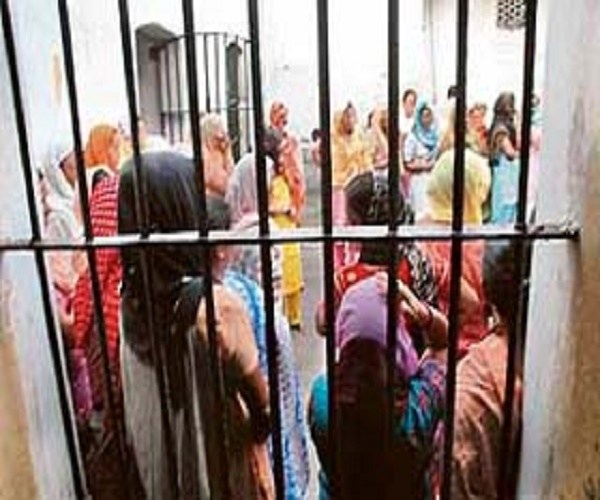A gender-specific approach is not only more cost-effective but has a positive effect on reoffending rates. Women constitute a clear minority in the prison estate – not just in India, but all over the world. On a global scale, women constitute 6.9% of the total prison population. In India, it is 4.3%.
As per the 2015 Prison Statistics Report of the National Crime Records Bureau of India (NCRB), 17,834 women are currently incarcerated in the country’s prisons. Out of these, 17% are in prisons exclusively for women and the rest in female enclosures of general prisons. Given the rise in the number of women and girls in prisons worldwide – by almost 53% between 2000 and 2017 – we need to push for more gender-responsive prisons, keeping in mind that the prison estate was created by men, essentially for men.
While there has been considerable debate on whether men and women should be treated differently with respect to prison life, many academics and policymakers – in the West as well as in India – advocate a difference in treatment. With the Bangkok Rules and the Nelson Mandela Rules – adopted in 2011 and 2015, respectively – and a landmark Supreme Court Judgement in 2016, India is actively focusing on developing differentiated responses.
Questions regarding the moral legitimacy of imprisoning women and subjecting them to its harsh consequences have come up repeatedly. Therefore, identifying the justifications for treating men and women differently is imperative.
The criminal justice system is designed with a focus on men – the prison estate in particular. The difference in the way women experience prison can be attributed to their biological and physical realities. Pregnancies within the prison, menstruation and hormonal changes specific to women have a direct bearing on the way women experience imprisonment. The fact that women are primary caregivers to children also makes imprisonment particularly challenging for some.
Separation from their children and a sense of having let them down can weigh heavily on incarcerated mothers. This separation also leads to disruption in the lives of children. Motherhood is a major reason why some imprisoned women have a much tougher time than men. Keeping this in mind, even the UN Standard Minimum Rules suggests alternatives to jailing women.
Differential sentencing should be favoured with respect to custodial sentences for women in order to reduce the disproportionate harshness it causes for women. “Shoehorned into a system designed for men”, the consequences prison has for women are far more severe than the consequences for men. Along with the painful separation from their families, imprisonment has devastating repercussions on their accommodation, employment and relationships with partners.
On average, the lower risk posed by women as well as the nature of offences committed by them serves as another reason for treating women differently. Even though the latest NCRB data states that a number of women in India have been convicted for murder (37%), most others have been convicted for non-violent and acquisitive crimes.
Such differential treatment is not without objections. Arguments stating that differential treatment favouring women is discriminatory to men exist but find strong rebuttal.
Perhaps the only problem with a gender-specific discourse is that it can cause the idea of imprisonment of women to be furthered. Noted academician Pat Carlen has argued that creating a “newly forged self-image of the women’s prison system as a system legitimated by its provision of programmes, treatments and therapies” would mean that an increasing number of women would be persecuted even for minor offences.
The danger in a gender-specific discourse should be acknowledged, but it shouldn’t make ineffective the justifications for differential treatment of male and female offenders. The dangers of the gender-specific discourse originate from refusing to acknowledge the treatment of women differently in respect of sentencing. Women should not only be treated differently with respect to prison life, but also in respect of sentencing.
These justifications apply globally. We must remember that besides incapacitation, imprisoning women serves no other purpose. Imprisonment does little to alleviate their situation. Instead, ity magnifies problems and creates new ones. Research indicates that release from custodial sentences leads to quicker reoffending and that the use of community sentences and appropriate treatment specifically designed for women is more desirable.
A gender-specific approach is an exception but should be made the rule. Responses designed for women are not only more cost-effective but also have a positive effect on reoffending rates. Therefore, in India, we should focus more on non-custodial measures, community sentencing and restorative justice programmes. #KhabarLive







